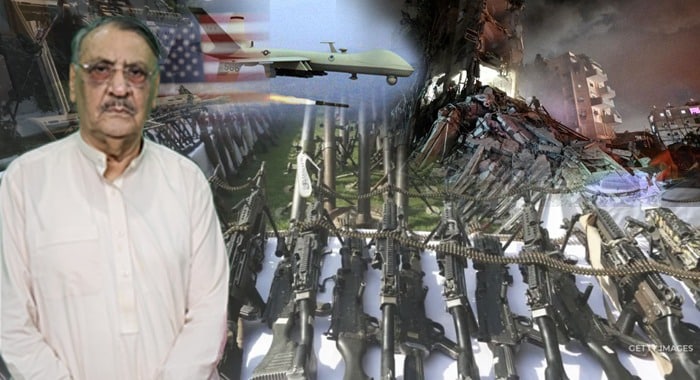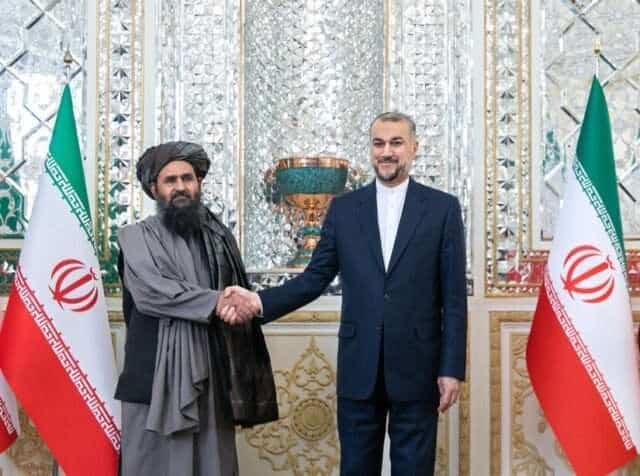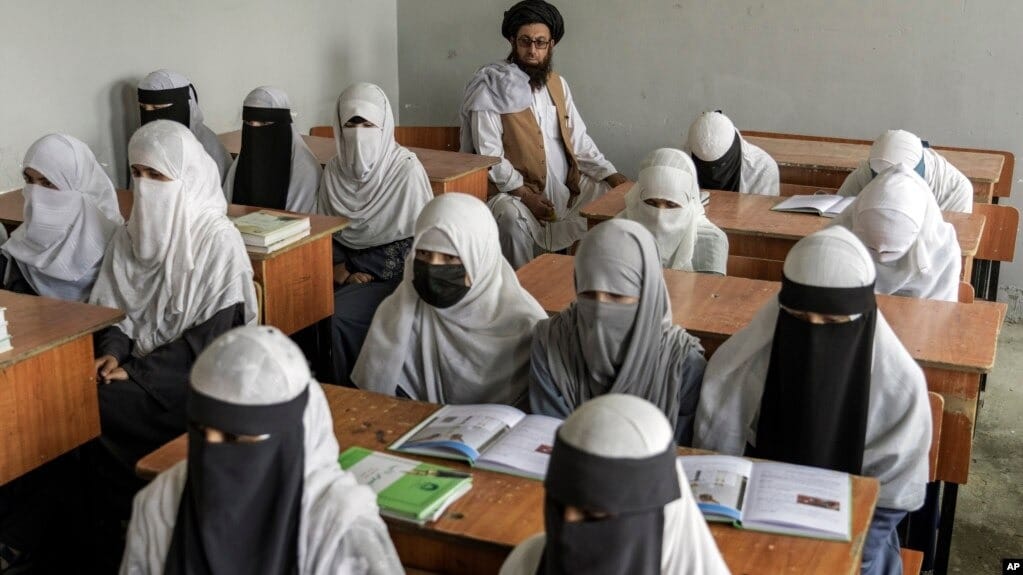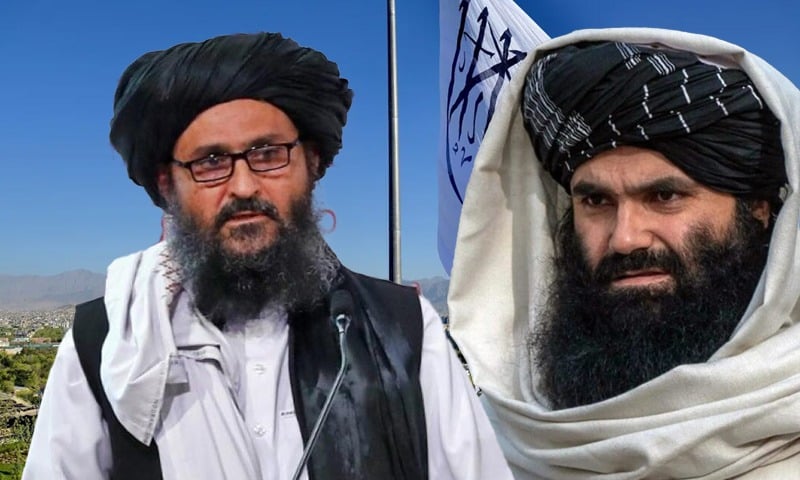Brig (R) Mehmood Shah
The recent terrorist drone attack on civilians in Bannu has sounded yet another alarm over the shifting contours of terrorism in Pakistan. No longer limited to outdated tactics or crude weaponry, terrorist groups operating in and around Khyber Pakhtunkhwa are now displaying increasing technological capability posing new and complex threats to national security. As someone who has spent a lifetime in defense and security affairs, I find it imperative to unpack not only how such capabilities have landed in terrorist hands, but also who is enabling this new chapter of asymmetric warfare against Pakistan.
There is little mystery about where the modern weapons are coming from. The collapse of the U.S. mission in Afghanistan and the hasty withdrawal of its forces left behind a massive cache of sophisticated arms. Today, these weapons from American rifles to thermal imaging goggles are openly available in black markets across Afghanistan.
Among these technologies, commercially available camera drones have become the newest tool of violence. While these are not yet high-grade military drones, they can be modified and weaponized. It is only a matter of time before such advancements are refined further by hostile actors. The question, therefore, is not whether terrorists will enhance their capabilities but how soon.
Fortunately, recent developments suggest that the Afghan Taliban government is not oblivious to the consequences of allowing cross-border terrorism. Senior religious authorities in Afghanistan have issued fatwas declaring that attacks launched from Afghan soil into Pakistan do not constitute jihad. This religious shift, if enforced, could sever the ideological justifications that many terrorist groups use to operate freely across borders.
Moreover, China’s diplomatic influence appears to be playing a constructive role. During a visit by Afghan officials to the Wakhan Corridor, Chinese delegates reportedly urged the Taliban to repair ties with Pakistan. Beijing offered economic incentives, including potential inclusion in the China-Pakistan Economic Corridor (CPEC), in exchange for stability. They pointed out that connectivity with China is far more feasible via Pakistan’s developed road networks than through the inhospitable mountains of northern Afghanistan.
But Afghanistan is not the only factor at play. The fingerprints of India’s covert involvement in sponsoring terrorism within Pakistan are becoming increasingly difficult to ignore. In a recent hearing before the U.S. Senate Armed Services Committee, the CENTCOM Commander stated on record that over 4,000 terrorist incidents have occurred in Pakistan in recent years. While his remarks were diplomatically phrased, the implication was clear: the source of the violence is being traced and India cannot escape scrutiny.
Iran’s own security operations have added further weight to these claims. In a major crackdown near Chabahar, Iranian authorities apprehended hundreds of operatives among them a large number of Indian nationals and Afghan agents. These individuals were reportedly engaged in espionage, sabotage, and facilitating terrorist movements across the region. Notably, some of the intercepted communications included plans to lay mines on roads connecting key infrastructure to the Iranian coast an operation disturbingly similar to tactics used in Balochistan.
The Iran-Israel conflict, meanwhile, has exposed the depth of the intelligence relationship between New Delhi and Tel Aviv. Many of the captured spies in Iran were found to be operating on behalf of Israeli intelligence, with Indian facilitation. The regional implications of this alliance are serious and they extend well into Pakistan’s internal security calculus.
Pakistan has long shouldered the burden of hosting millions of Afghan refugees a humanitarian gesture rooted in shared faith and regional solidarity. However, elements within this community have become vulnerable to exploitation by foreign intelligence agencies. For a few hundred dollars, some are willing to participate in sabotage or surveillance operations. This reality has compelled Pakistan to enforce stricter monitoring mechanisms and border controls, as national security must take precedence.
In the context of the Bannu drone attack, all eyes turn to North Waziristan. The mastermind behind much of the unrest in this region remains Gul Bahadur, a militant leader who has spent his life destabilizing the area. His past alliances with figures like Siraj Haqqani have enabled his network to thrive despite repeated military operations. Though Haqqani has recently resigned from his ministerial post, the true test lies in how much pressure the Afghan government is willing — or able — to exert on such actors.
It is widely acknowledged that Bahadur receives funding from Indian sources. His so-called ideological warfare is nothing more than a mercenary pursuit cloaked in religion. Ironically, many of these groups openly acknowledge that their financial support comes from “Hind” their term for India. What, then, remains of their claims to jihad?
Despite the magnitude of these threats, I remain optimistic. Pakistan’s law enforcement and military institutions are better trained and more responsive than ever. Recent counterterror operations in Dera Ismail Khan and elsewhere have resulted in the neutralization of militants without any police casualties a testament to improved intelligence and tactical readiness.
Moreover, the shifting global narrative is finally beginning to reflect Pakistan’s position. India’s covert actions are increasingly being exposed on international platforms. With Iran cracking down on Indian-supported cells and the United States acknowledging the scale of violence in Pakistan, the strategic climate is changing. It is now up to Pakistan’s diplomatic corps to capitalize on this momentum.
Terrorism, especially when state-sponsored, is never just a matter of ideology. It is often weaponized for political ends. The Pulwama incident, where 28 civilians were killed before Indian elections, remains a glaring example of how domestic politics can drive false-flag operations. To this day, no transparent investigation has been conducted because the truth could prove inconvenient.
Pakistan must remain vigilant not just in its border regions but in its diplomatic efforts, intelligence sharing, and international lobbying. The road ahead is fraught with challenges, but it is also paved with opportunity. If our resolve remains firm and our institutions continue to adapt, we will not only confront this new phase of hybrid warfare we will overcome it.





